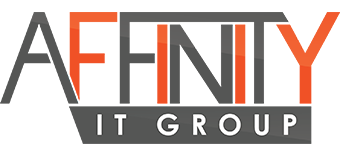A Painless IT Transition
As more communications and operations move into the digital sphere, more businesses are turning to managed IT services to meet their networking, database, backup, communication, and other service needs. Using managed IT means that companies don’t need to worry about internal hiring or onboarding of individual team members, which is a financial positive for the business.
But when a company grows, shifts the nature of their business, or opens a new office, IT needs can change. When this happens, a company may need to change IT providers in order to get their evolving needs met. How can you make sure that the transition is as painless as possible?
Understand what’s going wrong so you don’t waste time waffling over change
The first step to making any business change is to understand why the change is needed. If you know that things aren’t working well but don’t know what the problem is, then solving the problem will become more difficult.
It’s not necessary to understand what’s wrong in technical terms. You don’t need to know that you don’t have enough phone lines coming into your office; you just need to know that your customers are saying they can’t get through to you and your current IT provider can’t help.
And it’s also possible to change IT providers simply because you’re not getting the level of IT service you deserve. If you don’t get responses when you need help, if your provider can’t scale with your business, or if you just can’t get in touch with anyone, changing to another managed care provider makes sense.
Understand what you need so you don’t find the wrong provider
Along with understanding what’s wrong, it’s important to understand what you need. For example, you may realize that your employees are complaining that the systems are running slowly. You might need newer hardware that can support additional speed, but you might also need new systems that can support your current workload. A good managed services provider should be able to help you figure out what’s going on, but knowing at least part of your desired solution will be helpful as well.
Another example would be opening the company to bring-your-own-device policies since BYOD can save companies a huge amount of money. You may be aware that you need an environment that supports these devices and rules about how they may be used, but you may not be sure how to implement such a program. Your provider should be able to help.
Consider how those gaps can be filled so you don’t slow the transition
When you understand what’s wrong and what needs to be done, having some grasp of what sort of solution will best fit your business is helpful. For example, say you need to create voice conferencing and inter-office communication between remote workers and your main branch. Knowing, for example, that you can handle the support for the text communication pieces but need help with video conferencing will help your new IT provider get started with what you need.
Check your documentation so your new IT provider can work efficiently
To best help you, a new managed services IT team will need as much information as you can give. This means writing down what programs and services currently exist and how they’re used. You may be able to get this information from your previous service provider, but you should at least review the information that is provided and consider whether it matches what you see in the office.
In general, you avoid pain points when switching to a new IT service by offering as much information as you have, then letting them do what needs to be done. Be straightforward with your old company so they are aware of the changeover. There may still be some bumps in the road, but when you’re armed with knowledge, it will be much smoother.



